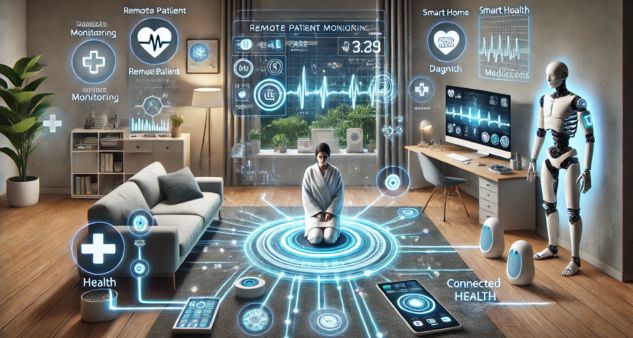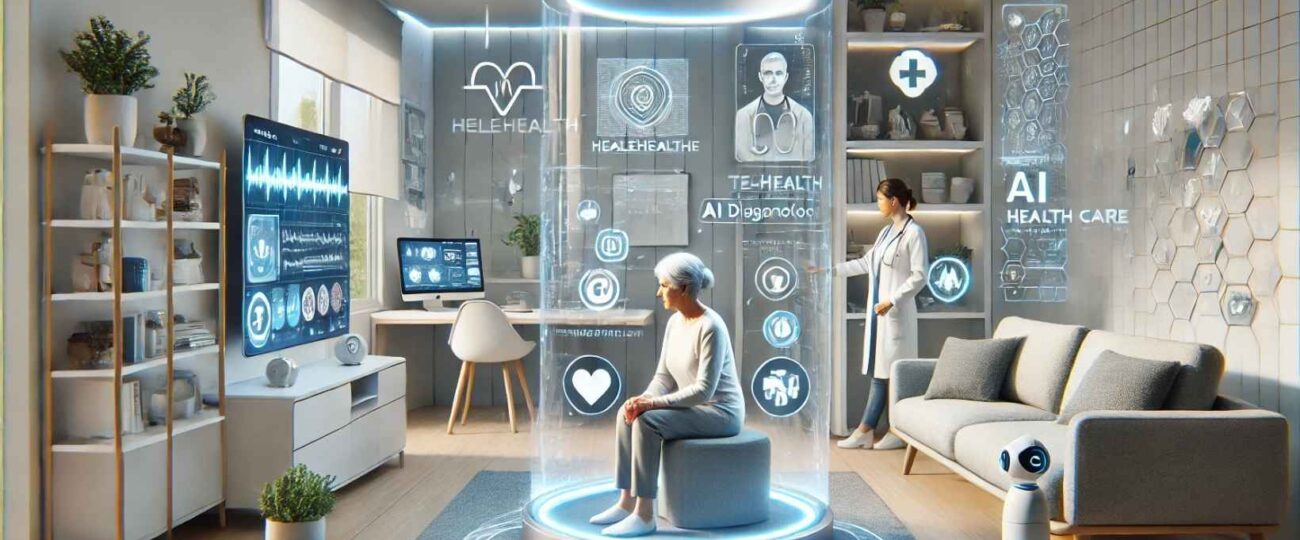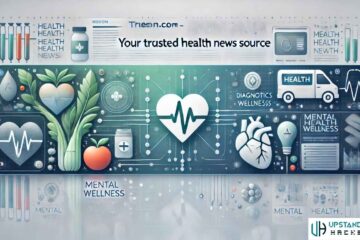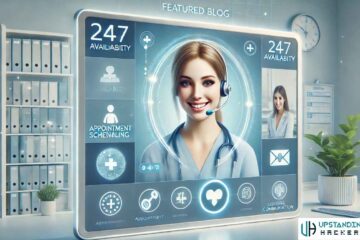The landscape of healthcare delivery is undergoing a profound transformation, with technological advancements propelling at-home care to new heights. As healthcare systems face mounting pressures, innovative solutions are emerging to bring high-quality medical services directly into patients’ homes.
This shift is not merely a convenience; it represents a paradigm change in how healthcare is conceived and delivered. From remote monitoring devices to AI-powered diagnostic tools, cutting-edge technologies are empowering patients and healthcare providers alike.
This article explores the exciting developments in future healthcare technology that are revolutionizing at-home care, enhancing patient outcomes, and reshaping the healthcare industry for years to come.
The Rise of Home Healthcare
The home health market is experiencing unprecedented growth, projected to reach $239.9 billion by 2030. This surge is driven by an aging population, increasing chronic diseases, and technological advancements. Future healthcare technology is elevating at-home care through innovations like telemedicine, wearable devices, and AI-powered monitoring systems.
Approximately 12 million Americans receive home health services annually, with 86% being 65 or older. This trend is reshaping the healthcare landscape, shifting complex care from hospitals to homes. The COVID-19 pandemic accelerated this transition, with virtual care addressing patient reluctance for in-person visits and improving access to health services.
As future healthcare technology continues to evolve, it promises to further enhance the quality and efficiency of at-home care, empowering patients and caregivers alike.
How Future Healthcare Technology is Elevating At-Home Care
Revolutionizing Remote Patient Monitoring
Future healthcare technology is elevating at-home care through advanced remote monitoring systems. Digital monitoring devices now track vital signs and transmit data in real-time, allowing healthcare providers to closely monitor patients from afar. This continuous data flow enables early detection of health issues and timely interventions, reducing hospital readmissions.
Empowering Patients with Smart Home Integration
Smart home devices and mobile health apps are transforming how patients manage their health. These technologies empower individuals to take an active role in their care, tracking medications, symptoms, and lifestyle factors. By integrating with telehealth platforms, patients can easily share this data with their care team, fostering better communication and personalized treatment plans.

Enhancing Care Delivery with AI and Automation
Artificial intelligence and automation are boosting clinician productivity in at-home care settings. AI-powered diagnostic tools simplify complex procedures, while automated systems reduce administrative burdens. This allows healthcare professionals to focus more on patient-centered care, ultimately improving outcomes and patient satisfaction in the home environment.
What’s Driving the Growth of Home Healthcare?
Aging Population and Chronic Conditions
The rapid growth of home healthcare is primarily fueled by America’s aging population. By 2050, the number of people over 65 is expected to nearly double to 84 million, creating unprecedented demand for at-home care services. Additionally, the rising prevalence of chronic diseases among older adults is expanding the patient pool requiring ongoing care.
Cost-Effectiveness and Patient Preference
Home healthcare is often more cost-effective than traditional hospital stays, aligning with the healthcare industry’s shift towards value-based care models. Patients also generally prefer receiving treatment in the comfort of their own homes, leading to improved outcomes and faster recovery times. These factors are significantly contributing to how future healthcare technology is elevating at-home care.
Technological Advancements
Innovations in telehealth, remote monitoring, and mobile health applications are revolutionizing home healthcare delivery. These technologies enable more efficient and effective care, further driving the sector’s growth and demonstrating how future healthcare technology is elevating at-home care options for patients.
The Rise of Telehealth in Home Care
Expanding Access and Improving Outcomes
The COVID-19 pandemic has accelerated the adoption of telehealth, revolutionizing how future healthcare technology is elevating at-home care. According to recent data, telehealth usage surged from 1% of patient visits in February 2020 to 17% in 2023. This dramatic shift has improved access to care, especially for underserved populations, while enhancing efficiency and affordability.
Innovative Technologies Driving Change
Advancements in remote monitoring, wearable devices, and AI-powered diagnostics are transforming home healthcare. These technologies enable healthcare providers to deliver personalized care plans, automate routine tasks, and offer real-time support to patients in their homes. As a result, how future healthcare technology is elevating at-home care is becoming increasingly evident through reduced hospital readmissions and improved patient engagement.
Challenges and Future Prospects
While telehealth offers numerous benefits, challenges remain, including ensuring data security and addressing digital literacy gaps. However, the projected growth of the global telehealth market to $175.5 billion by 2026 indicates a promising future for at-home care technologies.
Why Telehealth is Beneficial
Telehealth is revolutionizing how future healthcare technology is elevating at-home care, offering numerous advantages for patients and providers alike. This innovative approach to healthcare delivery enhances accessibility, especially for those in rural areas or with limited mobility. Patients can consult with specialists from the comfort of their homes, reducing travel time and expenses.
Improved Efficiency and Cost-Effectiveness
Telehealth streamlines healthcare processes, minimizing wait times and optimizing resource allocation. This efficiency translates to cost savings for both patients and healthcare systems, making quality care more affordable and sustainable.
Enhanced Continuity of Care
Remote monitoring technologies enable healthcare providers to track patients’ vital signs and symptoms in real-time. This continuous data flow allows for timely interventions and personalized treatment adjustments, ultimately improving patient outcomes and reducing hospital readmissions.
Smart Medical Devices Enhancing At-Home Care

Wearable Technology for Continuous Monitoring
Smart medical devices are revolutionizing how future healthcare technology is elevating at-home care. Wearable devices now offer continuous vital sign collection, providing real-time data on patients’ health and enabling timely interventions. For instance, smartwatches can perform ECGs and detect irregular heart rhythms, allowing for early detection of potential cardiac issues.
AI-Powered Analytics for Personalized Care
AI-driven predictive analytics on wearable data can anticipate health issues before they escalate, optimizing patient outcomes. This technology enables healthcare providers to offer personalized treatment plans and proactive interventions, showcasing how future healthcare technology is elevating at-home care through data-driven insights.
Integration with Smart Home Technology
The integration of smart home technology further enhances at-home care. Voice-activated assistants and automated systems can help manage medications, monitor environmental conditions, and provide reminders for health-related tasks. This seamless integration of medical devices into everyday life is transforming homes into integral parts of the healthcare system.
The Future of At-Home Healthcare
As future healthcare technology continues to evolve, it is elevating at-home care to new heights. Telehealth and remote monitoring systems are revolutionizing how patients interact with healthcare providers, enabling virtual consultations and real-time tracking of vital signs. This technology allows for early detection of health issues and proactive interventions.
Smart Home Integration
The integration of smart home technology is further enhancing at-home care. Voice-activated assistants and automated medication dispensers are improving medication adherence and promoting independence for seniors. AI-powered platforms analyze health data to predict potential issues, notifying caregivers and enabling personalized care plans.
Innovative Care Models
The “hospital-at-home” model, accelerated by recent healthcare challenges, demonstrates the feasibility of remote care for complex conditions. This approach, combined with wearable health devices and robotic assistants, is transforming how future healthcare technology is elevating at-home care, making it possible for patients to receive high-quality treatment in the comfort of their own homes.
FAQs

How is technology improving at-home care?
Future healthcare technology is elevating at-home care through various innovations. Wearable devices and remote monitoring systems now track vital signs in real-time, alerting healthcare professionals to potential issues. Telehealth platforms have evolved beyond simple video calls, offering comprehensive virtual care and improving continuity between in-person visits. AI-powered virtual assistants help answer medical questions and monitor symptoms for chronic conditions.
What are the benefits of technology-enabled home care?
Technology-enabled home care offers numerous advantages. It reduces hospital readmissions, shortens hospital stays, and provides significant cost savings for both patients and healthcare systems. At-home care also allows families to be more involved in their loved ones’ care, enhancing comfort and convenience. Additionally, AI and machine learning are enhancing home healthcare by providing predictive analytics to identify early warning signs and intelligent home care systems that adapt to individual needs.
Conclusion
As healthcare technology continues to advance at a rapid pace, the future of at-home care looks increasingly promising. From AI-powered diagnostic tools to remote monitoring devices, patients will have access to more sophisticated and personalized care from the comfort of their own homes.
This shift towards technology-enabled home healthcare has the potential to improve patient outcomes, reduce healthcare costs, and alleviate the burden on hospitals and clinics.
While challenges remain in terms of implementation and adoption, the trajectory is clear – at-home care enhanced by cutting-edge technology will play a pivotal role in shaping the healthcare landscape of tomorrow, offering patients greater convenience, autonomy, and quality of life.
See Also: 23 Signs You Grew up With Ehlers-Danlos Syndrome (EDS)










